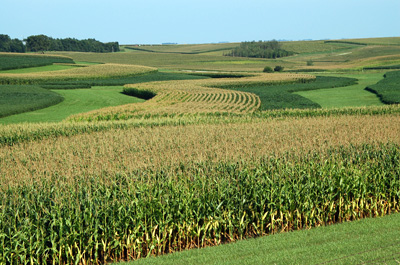|
|
 |
PAGE 22 / 102 |
 |
Unit 1: Basic Ecological Concepts and Principles Related to Agricultural Systems
 |
(Jerry DeWitt) |
Emergent Properties. As we look closely at an ecosystem, we marvel at its order and how different components of the system interact and relate to each other within the hierarchy. In fact, ecologists are very interested in emergent properties, i.e. the qualities and properties of ecosystems that are a result of or in response to the integration that occurs across different levels of the hierarchy. The community level, for example, is much more than a collection of separate populations. It has additional properties that can only be attributed to the relationship and interaction between its populations. In other words, an ecosystem is more than the sum of its parts!
In agricultural systems, two good examples of emergent properties are nutrient cycling and biological control. Both of these characteristics of an agricultural system derive from the interaction of its parts and are not observable or inherent when the parts are considered separate from one another.
Gliessman sees the goal of sustainability as being directly related to the organization or structure of an agroecosystem, and all the relations and interactions it is comprised of. “In an agroecosystem context, this principle [of emergent properties] means in essence that the farm is greater than the sum of its individual crop plants. Sustainability can be considered the ultimate emergent quality of an ecosystem approach to agriculture.” (Gliessman, 2007). |